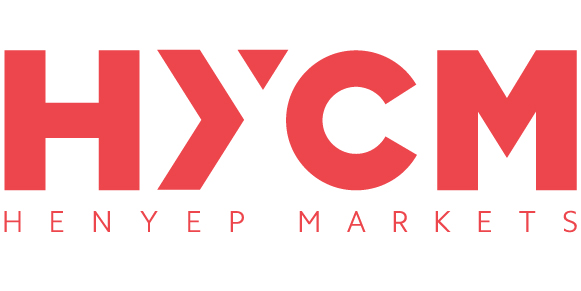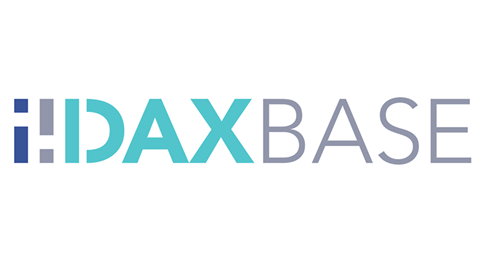Best Forex Brokers 2019

REGISTER & CONNECT TO LONDON TRADES FOR FREE
REGISTER & CONNECT TO LONDON TRADES FOR FREE
REGISTER & CONNECT TO LONDON TRADES FOR FREE
REGISTER & CONNECT TO LONDON TRADES FOR FREE
REGISTER & CONNECT TO LONDON TRADES FOR FREE
75% of retail investor accounts lose money when trading CFDs with this provider. You should considerwhether you can afford to take the high risk of losing your money.
What Are Commodities? Complete Beginner’s Guide

There are many topics about commodities and commodities trading which an investor must know before they commit their capital. This guide is for beginners and does not cover every aspect completely.
Commodities, such as gold, wheat, sugar and oil are natural materials, which make up the building blocks of the global economy. These minerals are used to create the products we rely on every day. Whether it’s the oats in our porridge or the fuel for our vehicles, commodities surround humans.
Just like every other market, commodity markets are most effective when there is profound and consistent liquidity. Liquidity is important as it gives the trader or investor the ability to get in and out of trades efficiently.
Primary and Secondary Commodities
Commodities can be spilt into two categories, primary and secondary.
- Primary: An unprocessed commodity, extracted directly from natural resources. Primary commodities are non-standard, which means their quality depends on when and where they originated. An example of a primary commodity is Crude Oil.
- Secondary: These are the products produced from primary commodities to meet market requirements. For example, the process of refining crude oil generates a range of products such as gasoline, propane and jet fuel.
-
Commodity Classes
Agricultural, Energy and Metals are the three main types of commodity classes.
Agricultural Commodities
As food is the most important component in sustaining human life, agricultural commodities play a massive role in the global economy. The market is substantial as well as offering millions of people employment and income in developing economies. Below is a list of some commonly traded agricultural commodity products:
| Cocoa | Coffee | Corn |
| Cotton | Oats | Orange Juice |
| Rapeseed | Rice | Soybean |
| Sugar | Wheat |
As well as some Livestock products:
| Feeder Cattle | Lean Hogs | Live Cattle |
Energy Commodities
Energy commodities have been pivotal in motivating industrialisation and global growth. As both developed and developing economies consume more energy, the market has grown substantially. The oil market is larger than all metal markets combined with crude oil being the most traded commodity in the world. Below is a list of some commonly traded energy commodity products:
| Brent Crude | Ethanol | Gasoline |
| Heating Oil | Natural Gas | Propane |
| WTI Crude Oil | ||
Metal Commodities
Like energy, metals have been essential in driving economic growth and industrial development for centuries. Modern-day metal trading began in the mid-19th century. Then, China’s industrial boom in the 21st century revolutionised the metals market. The London Metal Exchange, founded in 1877, is the largest metals exchange in the world and in 2018; the average daily volume was 730,498 lots (source: LME). Below is a list of some commonly traded metal commodity products:
| Aluminium | Aluminium Alloy | Copper |
| Lead | Nickel | Steel |
| Tin | Zinc |
As well as precious metal products:
| Gold | Palladium | Platinum |
| Silver |
Investing and Trading in Commodities
The commodities market has grown significantly since the day’s farmers and miners traded products in the local marketplace. In today’s innovative markets, investors have many different ways to gain exposure to commodities.
Physical Commodities
Direct investing is the process of purchasing and storing a commodity for future use or trade. Physical commodities are not traded through exchanges as products vary in quality, location and grade. Moreover, storing and transportation costs should be taken in consideration. This is why direct investment is not a realistic method for many private investors but rather for commodity trading firms.
Commodity Related Stocks
Investing in commodity stocks is another approach to gaining some exposure to commodities. For example, your returns from investing in BP, a multinational oil and gas company headquartered in London, are influenced by both company or stock market risks and risks from the underlying commodity. However, in the long run the performance of the stock may correlate more towards the equity market than the commodity market.
Equity options of commodity related stocks offer a similar level of exposure. Stock Options involve lower capital requirements as well as providing the ability to hedge risk. They may also offer great risk-to-reward ratios, as risk is limited to the cost of the option. Nevertheless, options are complicated products and may not be suitable for all investors/traders.
Exchange Traded Funds (ETFs) and Exchange Traded Notes (ETNs)
ETFs and ETNs allow investors to gain a broad exposure to commodity markets. These products aim to track the performance of individual commodities or group of commodities; called a commodity index. As ETFs/ETNs are trackers, the investor is able to take advantage of the volatility without having the need to invest in a futures contract. In addition, positions do not need to re-establish themselves unlike futures. However, ETFs are not perfect and inefficiencies may occur. An ETF/ETN may not completely replicate a large rally or selloff in the underlying.
Commodity Futures
Futures is the easiest and most popular approach to gaining exposure to specific commodity markets. A futures contract is an agreement to buy or sell a specified quantity (of a commodity) on a specified future date at a price agreed today. Under the contract terms, the seller is required to deliver the commodity on the specified delivery date. Futures markets involve both type of players, institutions who require delivery or futures for hedging as well as speculators.
There are numerous benefits to trading futures. They are exchange-traded derivatives and the trader isn’t subjected to counterparty risk. They offer good liquidity, which makes the market attractive for speculators and leverage is available from margin trading. Moreover, traders are able to take advantage of falling prices by going short, a highly attractive feature amongst speculators.
Like many things, futures are not perfect. Markets are volatile and inexperienced investors can lose their initial capital very quickly. Furthermore, since contracts are standardised, they are inflexible for those wanting slightly different conditions. As a result, futures are not the best for hedging. Commodity forwards are a better option for hedging as contracts are non-standardised and parameters are variable.
Spot Commodity Market
It is worth mentioning the spot commodity market. The spot market allows traders to buy or sell a specified commodity for immediate delivery at settlement. Spot prices are usually different to futures prices. This is because there are costs associated with futures products such as storage and delivery. However, as time moves forward, and the delivery date approaches, the price difference between the futures and cash market converges.
List of Major Futures Exchanges
- London Metal Exchange (LME)
- ICE Futures Europe (London International Financial Futures and Options Exchange (LIFFE))
- Eurex
- NYSE LIFFE
- CME Group – Chicago Mercantile Exchange
- NYMEX – NY Mercantile Exchange
- COMEX – Commodity Exchange
- CBOT – Chicago Board of Trade
Fundamentals Analysis of Commodities
Commodity markets follow the basic rules of supply and demand. Lower supply levels push up demand, which in turn drives prices higher and vice-versa. Markets however, are much more complicated than this basic economic principle. For example, the global economic situation can have a substantial impact on prices. Fears of a possible global slowdown can act as a catalyst to price movement. If prices are high and there are global slowdown fears, then demand falls, leading to oversupply and eventually pushing prices lower. Therefore, it would be sensible to understand the broad economic picture before placing too much emphasis to supply and demand fundamentals.
Weather and other natural events can also have long lasting effects on commodity prices. Technical errors, human errors and geopolitical issues may also over or undersupply the market.
Technical Analysis of Commodities
Technical analysis is the study of price. When used correctly, it is a very powerful tool for analysing financial markets. It can determine market direction based on your time horizon and, just as importantly, aid in managing risk. Technical analysis can be applied to any of the products mentioned above. Whether you use commodity stocks or commodity futures, as long as there is price data, you can use technical analysis to gain a deeper understanding of price action and sentiment. Basic methods can help in finding areas of possible struggle, whilst advanced techniques can help in understanding where the market finds acceptance and who is in control.
Risks Involved and Incorporating Commodity Investments In Your Portfolio
It is important to understand the risks involved with trading or investing in commodities. As mentioned earlier there are many different approaches to gaining some sort of exposure to commodity markets. Each approach comprises of its own risks and there is no Holy Grail.
ETFs/ETNs are great for tracking the broader market. However, their tracking capabilities are not perfect especially in times of high volatility.
On the other hand, futures provide a pure play on the underlying as well as providing features that appeal to many different types of investors. Yet, they are still very volatile and leverage can amplify losses very quickly.
Whatever your chosen method, risk management is key. Technical analysis can aid in objective decision-making for entry and exit as well as trade direction. Technical analysis is especially helpful when unexpected events effects commodities.
When incorporating commodities into your portfolio it is important to create an appropriate allocation. You must know your overall objectives and what are you aiming to achieve.
Will you use commodities for hedging purposes, and, if so, what are your best options. What are your risk parameters and how does this influence what products you trade. What is your investment horizon? Are you intending to trade short or medium-term or invest for the long-term? For each, what knowledge must you have?
Conclusion
To conclude, commodities are great investments to diversify your portfolio, allowing you hedge risks. Markets are liquid, which help to provide consistent trading opportunities.
Whichever product you choose to invest in (stocks, ETFs, futures etc.), it is important to know how they work and what their advantages and disadvantages are. In addition, it is sensible to have a detailed trade or investment plan specifying the ins and outs of your aims, how you find opportunities, how you manage risk and what you intend to achieve whilst being on the market.
Finally, it would be sensible to learn an analytical technique, especially technical analysis, to assist in your decision-making.
